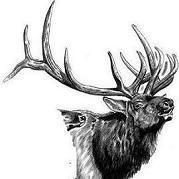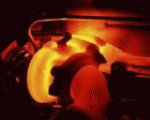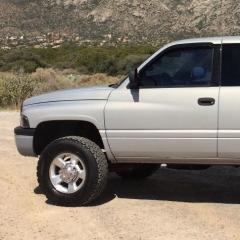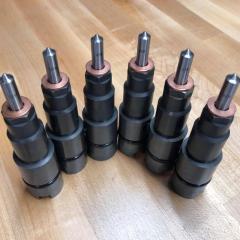Leaderboard
-
in all areas
- All areas
- Marker
- Events
- Event Comments
- Files
- File Comments
- File Reviews
- Images
- Image Comments
- Image Reviews
- Albums
- Album Comments
- Album Reviews
- Blog Entries
- Blog Comments
- Topics
- Posts
- Cummins Articles
- Cummins Article Comments
- Cummins Article Reviews
- Vendors
- Vendor Comments
- Vendor Reviews
- Ads
- Ad Comments
- Ad Reviews
- Policies
- Policy Comments
-
Custom Date
-
All time
December 14 2009 - July 21 2025
-
Year
July 20 2024 - July 21 2025
-
Month
June 20 2025 - July 21 2025
-
Week
July 13 2025 - July 21 2025
-
Today
July 20 2025 - July 21 2025
-
Custom Date
07/07/2016 - 07/07/2016
-
All time
-
leathermaneod
Yearly Subscription1Points1,082Posts
Popular Content
Showing content with the highest reputation on 07/07/2016 in all areas
-
ABS and Brake lite stuck on
3 pointsPerhaps he has the (KELSEY-HAYES EBC 2) 2 wheel drive ABS system. I believe all wheel drive ABS system was optional in 99 year model of the truck. Now this is all wheel drive ABS system: Kelsey-Hayes EBC 325 Antilock Brake System (ABS) The EBC 325 system is a three channel, three sensor, four wheel antilock brake system. Now this is slightly off topic but I was reverse engineering the CCD bus network for the past 6 months trying to develop my own Overhead Console (Message Center Display) which is already capable of reading ABS codes and AirBag codes. The idea is to develop overhead console (Message Center Display) with 3D printed case that is a direct replacement for the Dodge RAM OEM (Message Center Display) overhead console. Of course the progress is very slow mainly because of the two kids on board, full-time job, it seems like life is always getting in the way ): Here I got a short YouTube video preview: Dodge RAM 99~02 Prototype overhead console message center display ABS testing. https://youtu.be/yCJrg9OZzWE Now before anyone asks, the instrument cluster and the PCM and ABS is actually from Dodge Durango 2000 scrap yard SUV.3 points
-
He351ve stand alone Arduino controller code for 2nd Gen Cummins
peak shaft speed is 130,000 rpm at a 4.5 PR so at sea level 40 is about as high as you want to go and stay within the efficiency islands. Nah I have a bmw 750il for when I want to go fast. The truck isn'y very exciting over 70 mph hahaha.......the bmw however is just warming up in 2nd at 701 point
-
392 Stroker Hemi Build
1 pointThe forum is active, but we are mostly geared towards cummins powered vehicles, HOWEVER our members skills extend well beyond diesel, as you can see in this thread. Welcome and post, I am sure of these guys will help you out.1 point
-
Proper Nv5600 fluid
1 point
-
Proper Nv5600 fluid
1 pointThat is incorrect. I read up on it for days and the closest oil was a texico brand. Either way it's change a few times in it's life. To me it's not worth experimenting with different oils in this case.1 point
-
Drive without front driveshaft
1 pointNo problemo. And, umm, a... it was actually just an old camera and a bungee...1 point
-
Drive without front driveshaft
1 pointThe internal drag inside the transfer case from fluid and bearings. I'm sure the drivers side axle is also helping it turn a small amount simply from the fluid viscosity as the spider gears move. And thanks for the video Cowboy. Thats awesome..... Gotta love GoPro's.1 point
-
Drive without front driveshaft
1 pointSorry guys, wrong thread haha. Just because. hehe Either way, regardless of how fast it spins, it has been known to cause vibration.1 point
-
Mystery oil leak after vp change
1 pointAs the vacuum pump creates the vacuum it vents the air into the gear case. So if you have a vacuum leak then the vacuum pump turns into a small air compressor and pumping air into the gear case increasing the blow by gases and possibly adding blowing oil to the list too. So when the vacuum system is leak free there is no air pumped into the gear case. Also the engine oil is fed into the vacuum pump it increase sealing of the sliding vanes that oil drains back into the gear case as well. It's slung off the gear as well lubing the gears in the case.1 point
-
Steering upgrade
1 point
-
Longer cranking...
1 pointThere is also the theory that inlet pressure at the vp44 has little or nothing to do with output pressure, but rather that output pressure is created by the internal vane pump. I'm not saying it's true, and I don't think it's been proven, I wouldn't bet $1000 on it, but it's interesting to think about and maybe why the original fuel pressure spec was 10 psi....1 point
-
Longer cranking...
1 pointThe quadzilla reads fuel temp. my fuel temp in the vp44 is always ~15-30*f over ambient regardless of how long you drive. the tank acts as a good heat sink.1 point
-
Most amazing mod I've ever made to a 2d gen... a new cupholder.
close. give me coffee or ill make you wish for death.1 point
-
Tow mirror options
1 pointAFAIK 1aauto is the only one that's made 4th gen mirrors that are direct bolt on.1 point
-
Most amazing mod I've ever made to a 2d gen... a new cupholder.
Give me coffee or give me death.1 point
-
loss of overdrive when ac is turned on
Test the new alternator for AC noise. AC noise tends to burn up computers, longer you have it the worse off the computers are. I would get some dielectric grease and check and lube every plug under the hood with it. Apply it, then cycle the plug 5 or 6 times. Look for any signs of corrosion on the pins and wires.1 point
-
Drive without front driveshaft
1 pointJust keeping it real..... How can someone learn from anything if no ones going to make sure the information being given is accurate. I wouldn't know half the garbage I know today if it wasn't for someone thankfully setting me straight one way or another. That doesnt mean I'm right either..... I always tell my kids to question what you're being told because following blindly is no different than being controlled.1 point
-
Drive without front driveshaft
1 pointThe engineers in drive train development or the guys in marketing and sales? The perspective is completely different. Its my vote that marketing and sales do the most to obfuscate the terms and realities of what is really going on. I do agree to the counter point though: that if I wrote the promotional pamphlets, they would be minimum of 46 pages long, and the average purchaser would have fallen asleep at paragraph 3. I can see it (me) now.... Sales indian "how does the power get the front axle?" Engineering indian".......(10 minutes)...... and finally we decided that the double cardan would work, though not nearly as good as an Rzeppa and not nearly as costly as a bendix-weiss....... (at least 10 more minutes)" Sales indian "we'll call it a CV joint." Engineering indian "omg no you can't.....(minimum 10 minute explanation of why its not really one) Sales chief to sales indian (whispered) "you say one more word about this and you are fired. It is a CV joint. get on to the ..." Engineering chief to engineering indian (whispered) "you say one more time that it is not a CV joint, and they might figure out that it isn't really 300 miniature horses in there on tread mills making the power. you will be fired." If that's not exactly how it went I can bet it was really close! Dilbert is my hero! Hag1 point
-
Drive without front driveshaft
1 pointI think pictures do best for something like this. In short, a CV joint is a constant velocity and a double cardan joint is a "near" constant velocity. Its very common to hear them being called one in the same. CV joints are found on front wheel drive vehicles and 4wd vehicles with independent front suspension. Double cardan joints are found on driveshafts. Some older luxury cars had dual double cardan driveshafts (one on each end of the driveshaft) so as to lessen any and all u-joint harmonics. Here's some pictures of a CV joint and a double cardan joint, whereby you can clearly see they're nothing alike. If you want to learn more about their mechanical differences then Google may be your best friend because I'd probably end up making a mockery of the explanation. Oh now the hassling is on like donkey kong.....1 point
-
Drive without front driveshaft
1 pointI'm NOT attacking your comment, but let me just point a couple things out. 1) there's no CV joint on these trucks. The double u-joint on the front driveshaft is called a double cardan joint. Totally different than a CV (constant velocity) joint found on front wheel drive cars and independent front suspension 4wd vehicles. 2) If the 4wd system is "part-time" (only on the CAD trucks) then the driveshaft will not spin at road speeds in 2wd and will not cause any vibration. Its impossible for it to do so as its hardly moving while in 2wd. Your vibration had to be coming from some other source or the front driveshaft was somehow engaged while in 2wd. Again, I dont want to seem like I'm hassling you.....just merely making some points clear.1 point
- 392 Stroker Hemi Build
This leaderboard is set to Boise/GMT-06:00










